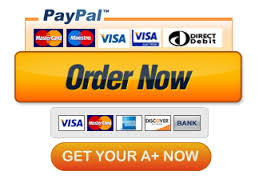muscular fitness
When people think about muscular fitness, many immediately imagine a bodybuilder lifting weights to increase the size of his or her “lats,” “delts,” “pecs,” and so on. You may find yourself wondering what those strange words mean. In fact, they refer to the specific muscle groups that a weight trainer might want to target with a given exercise.
Muscle Groups
To develop an efficient and effective fitness plan designed to maintain and increase muscular strength, it is first necessary to review the major muscle groups of the human body.
- Arms
- The shoulder muscles, or deltoids (“delts”), allow us to raise and rotate our arms. Strong deltoids make possible all sorts of activities.
- The biceps (sometimes called “bis”) are the round muscles at the front of the upper arm. Strong biceps allow one to lift or pull a heavy load.
- The triceps (“tris”) are the muscles at the back of the upper arm. The triceps allow us to extend and straighten our arms.
- Torso
- The trapezius muscles (“traps”) run from the neck down to the middle of the back. They are the muscles you use when you shrug your shoulders. They also allow us to turn, raise, and lower our heads, and are vital to any upper-body activity.
- The latissimi dorsi muscles are the broad muscles of the middle back and sides. Responsible for twisting, turning, and bending the torso, the “lats” helps us perform all types of movements.
- The pectoral muscles (“pecs”) are the muscles of the chest. Used in just about every type of upper-body movement, pectorals also help us maintain good posture. Strong “pecs” can help strengthen other muscles of the torso.
- The abdominal muscles (“abs”) are the muscles of the lower front torso. Because they connect upper body and lower body, the abdominals assist in many movements. Strong “abs” are vital to an overall strong muscular system.
- The oblique muscles run up and down the sides of the lower torso, on either side of the abdominals. Strong oblique muscles play a role in posture, flexibility, and overall conditioning.
- Lower Body
- The muscles of the buttocks are known as the gluteal muscles (“glutes”). Together, they make up the gluteus maximus, the largest muscle in the human body, of which we have two. The gluteal muscles allow us to walk, run, and leap.
- The quadriceps (“quads”) are the muscles at the front of the thighs. They make leg extension possible.
- The hamstring muscles lie at the back of the thigh and make it possible to flex the leg while walking or running.
- The calf muscles are the muscles of the lower legs that help control the feet.
- Arms
- Deltoids
- Pull-ups, traditional or modified
- Shoulder push-ups (performed with the hands and feet on the ground and the body in a “V” shape, bent forward at the waist)
- Upright rows, with weights or bands (performed by raising weights from mid-torso to shoulder-level)
- Shoulder press (upward), with weights or bands
- Biceps
- Pull-ups, traditional or modified
- Curls, with weights or bands
- Triceps
- Bar dips, or modified dips
- Push-ups, hands close together
- Triceps extensions, with weights or bands
- Deltoids
- Torso
- Trapezius
- Pull-ups, traditional or modified
- Shrugs, with weights or bands
- Dead lifts
- Latissimi dorsi
- Pull-ups, traditional or modified
- Pull-downs (on a weight machine)
- Seated rows
- Core
- Pull-ups, traditional or modified
- Plank pose
- Boat pose
- Crunches and curls
- Oblique muscles
- Side plank pose
- Abdominal twists
- Trapezius
- Lower Body
- Gluteal muscles
- Lunges, with or without weights
- Squats, with or without weights
- Hip thrusts (from a supine position on the floor)
- Step-ups
- Quadriceps
- Lunges, with or without weights
- Squats, with or without weights
- Leg press (on a weight machine)
- Wall-sit exercises (performed with the back against a wall, upper legs parallel to the floor)
- Step-ups
- Hamstrings
- Lunges, with or without weights
- Dead lifts
- Hamstring curls (from a prone position on the floor)
- Calves
- Calf raises, with or without weights (performed by raising the toes, lowering, and repeating)
- Farmer’s walk (on the toes, with weights in both hands)
- Gluteal muscles
- Burpees (squat, jump up, drop to plank position, push-up, jump up, repeat)
- Squat to overhead press, with weights
- Inchworm exercises (bend forward at hip and crawl hands forward until in push-up position, push-up, walk legs forward until bent forward again, repeat)
- Push-up to side plank position (repeat alternating sides)
- Form and technique matter. Improper form can lead to muscle strain and even injury. If you are unsure how to perform an exercise, find a fitness expert or a trustworthy online source for the correct information.
- Be sure to warm up and stretch the targeted muscle group before lifting weights. This lessens the chance of injury.
- Regardless of the exercise, the proper weight should tire your muscles out after about 12 repetitions.
- Give your muscles time to recover by resting one full day between exercising each specific muscle group. Work different muscle groups on alternate days.
- 30 minutes or more of exercise each day
- at least five minutes of warmup and stretching, and five minutes of cool down and stretching each day
- a variety of exercises that work different muscle groups. Do not repeat the same exercises nor work out the same muscle group on consecutive days.
- incorporation of exercises that make sense based upon your personal fitness goals
- Which types of exercise did you include?
- How closely did you follow your muscular fitness exercise plan?
- What are the strengths of your plan?
- Which challenges did you face while trying to adhere to your muscular fitness exercise plan for a week?
- What could you change about your plan to avoid such challenges in the future?
- How could you adapt this workout to fit a busy schedule?
Types of Muscular Fitness Exercises
When considering types of muscular fitness exercise, people often think first of training in a weight room, whether using barbell and free weights, a weight machine, or flexible bands. In fact, while weightlifting can be a good way to increase muscle strength for some, it is far from the only effective method.
Consider some exercises for each of the major muscle groups. Not all involve weight training.
In addition to the muscle-specific exercises listed, many excellent muscle-conditioning exercises work multiple muscle groups. These include:
Muscular Fitness for Me
As you know, health experts encourage everyone to exercise regularly, and that includes regular muscular fitness exercises. Based upon your own physical fitness goals, choose from the exercises previously listed, as well as any others that you can find, that work the various major muscle groups. Choose exercises that you can complete and that you will enjoy performing.
If you choose to incorporate weight training into your muscular fitness exercise plan, here are some things to keep in mind:
My Plan
Create a two-week muscular fitness exercise plan that includes a plan for each of the 14 days. Your plan should include the following:
My Muscular Fitness Exercise Plan
Complete the assignment.
(Maximum Score: 14 points)
- Attach your personalized 14-day exercise plan here.
mental health system
my agency is called mental health system . A little bit about My agency services different populations that struggle with it. Social behavior, trauma, Mental health anxiety. assessment, diagnosis, treatment, and behavioral disorders in individual and group contexts. . Our goal is to maintain an empathetic, ethical and responsive attitude in all phases.. So sometimes we have to run a group session and the rest we do if we Shadow at a different school. Also for those who choose to do their session after school, they come to our office and we offer a therapist for them to get the treatment done. for this assignment my school is asking us to write 2-3 pages summary answering the 9 competency and how i grow in this position.
Write a self-evaluation on your field experience for this semester in the following core competency areas using the Comprehensive Skills Evaluation as your guide line:
- Competency #1 – Professional and Ethical Practice
- Competency #2 – Diversity and Difference in Practice
- Competency #3 – Advance Human Rights and Social, Economic and Environmental Justice
- Competency #6 – Engage individuals, families, groups, organizations and communities
- Competency #7 – Assess individuals, families, groups organizations and communities
- Competency #8 – Intervene with individuals, families, groups organizations and communities
- Competency #9 – Evaluate individuals, families, organizations and communities
- Address areas of growth, and challenges in each competency above (#1-3, and 6-9).
- You may address other competencies in addition to those listed above, if relevant to your internship and area of practice. Ex, SW 755 may wish to include additional competencies regarding policy practice and evidenced based practice and research.
Growth
- Evaluate your learning and describe how you acquired these skills. Please include examples to illustrate your growth and increased competence.
Challenges – Areas for Improvement
- You may address gaps or challenges. You may discuss areas you would like to gain more experience in and areas you did not cover. What competencies do you still struggle with? What new experiences would you like to be exposed to?
Reference
- Comprehensive Skills Evaluation – Use the individual practice behaviors listed under each competency to gain a better understanding of the possible content areas.
- Complete your self evaluation in the narrative space below: (2-3 pages equivalent)
- Your field instructor and field faculty will review and sign after you have completed and signed the form. You may wish to review your self evaluation with your field instructor as part of your end of semester evaluation and dialogue.
lessons about C.A.R.S. introduction
Notice that this time highlighting was used to show the different moves in each section AND that a comment box of the same color was used to add an explanation about how the reader (Professor Miller in this case) was able to find the parts in each section of the first sample student researched article. Your task in this assignment is to annotated the same things in the second sample student researched article, the one about graphic novels and student academic achievement as well as well-being. To do this task:
- Complete the lessons about C.A.R.S. introductions and conclusions in the lesson section above.
- Return to this assignment and download the first sample student researched article with Professor Miller’s annotations:
SAMPLE_ResearchedArticle_PopularMagazine1_Intro&ConclusionAnnotated.pdf- Read the article and the annotatations
- Download second sample student researched article: SAMPLE_ResearchedArticle_PopularMagazine2.pdf
- Save the file with your name in it
- Read the article and add your annotations for
- the 3 C.A.R.S. move in the introduction
- highlight each move in its own color
- add a comment box in the same color and in it explain what move the writer is making and how you as a reader know the writer is making this move
- the two moves in the conclusion
- highlight each move in its own color
- add a comment box in the same color and in it explain what move the writer is making and how you as reader know the writer is making this move
- the 3 C.A.R.S. move in the introduction
BUSINESS LAW
Mike enters into a contract with Jane to sell his vintage car for $20,000. Mike believes that the car is in perfect condition, but it actually has a major mechanical issue that would cost $5,000 to repair. Jane later discovers the issue and wants to cancel the contract. Can she do so? What are the legal principles at play?
This question tests your understanding of contract law and the principles of misrepresentation and mistake. To answer the question, you would need to discuss the requirements for a valid contract, the elements of misrepresentation and mistake, and the remedies available to Jane if the contract is found to be voidable. You would also need to apply these legal principles to the specific facts of the case, taking into account any relevant statutes or case law.
THERMO FLUID DESIGN
Given a facility’s hourly chilled water (CHW) cooling load demand shown in the following spreadsheet, a combined chiller and stratified CHW thermal storage system is proposed to meet the demand while saving the cost (due to the time-of-use rate schedule). A full storage operating strategy (load shift) is employed in which the chiller is completely turned off for the 5-hour ON-PEAK rate period from 12pm to 4 pm (why 5 hours? It starts from 12pm to 5pm, i.e., from 12-1pm, 1-2pm, 2-3pm, 3-4pm, and 4-5pm.) with the cooling load solely provided by the CHW storage system. During the NON ON-PEAK period (5pm to 11am), the chiller will meet the instantaneous cooling load demand in addition to store thermal capacity.
Construct an Excel spreadsheet based on the one in the next page which illustrates the load shifting operating strategy and answer questions 1-10 on Blackboard.
Fraud Audit Issues
Using the knowledge gained with the ACL tutorials, complete FIVE ACL tests to uncover the following
fraud, putting your screenshots and a brief (1–3 lines) explanation of each test and the results below the
screenshots:
Because of James Walker’s familiarity with the purchases system, he was asked by top management to
temporarily oversee the initial running of the new system to ensure a smooth transition from the old
legacy system. After several months, Walker was offered a promotion to Warehouse Manager and
given permanent responsibility for product purchasing.
This act by management placed Walker in a situation that allowed him to exploit inherent weaknesses in
the system and perpetrate a fraud. As part of the fraud, Walker established himself as a fictitious
vendor, number 11663. The fraud methodology involved Walker using his uncontrolled access to the
system to falsify purchase orders to his phony company and then using voided receiving report numbers
to simulate inventory receipts. These two events trigger the system to create a voucher payable record.
By submitting vendor invoices from his fictitious company, Walker effectively tricks the system into
writing him a check.
Hints for the five tests:
1. Because Walker wants the checks to come to him personally, what address do you think the
company he makes up would have?
2. How many of the vendor purchases are attributable to Walker’s fictitious company? (use
Classify to get cost and percentage)
3. Do the purchase order quantities for the vendor match the receiving reports? (Filter Purchase
Order for Vendor 11663, Total on Quantity)
How much was paid for the purchase orders if the quantities were different? (Join Purchase
Order to Chk Register on Vendor Number and filter for Vendor 11663. Then total the
Ext_Cost)
4. How much was paid to the fictitious vendor? (Chk_Amnt from Chk_Register for vendor
11663)
Does this match the Vouchers? (This is what was paid for purchase orders from Q3)
5. How much was received from the fictitious vendor?
NURSING : PATIENTS ENGAGEMENT
- identify the importance of addressing patient engagement in the management of a patient’s specific health, economic, and cultural needs based on the best available evidence.
- Why is patient engagement necessary to ensure that patients are better able to manage their specific health conditions?
- What evidence in the current literature(within the last 5 years) supports the benefit of patient engagement?
- Explain the potential use and impact of information and communication technology tools needed to improve consumer health literacy for a specific patient population.
- Consider what type of health care technology modalities are useful to improve consumer health literacy
- Are there mobile applications, telehealth features, or other technology that can facilitate improving patient care?
- Evaluate the value and relevance of the technology modalities that may be used to address the needs identified in the patient population assessment.
- How does each proposed technology modality encourage patient engagement in an ethical, culturally sensitive, and inclusive way?
- Ensure that your strategies:
- Promote honest communications.
- Facilitate sharing only the information you are required and permitted to share.
- Enable you to make complex medical terms and concepts understandable to your patient and their family regardless of language, abilities, or educational level.
- Consider how health information exchange and interoperability of technology modalities contribute to their value.
- Identify innovative strategies for leveraging technology to support quality, ethical, and efficient patient care that is culturally and linguistically appropriate for the identified patient population.
- Consider how the selected technology impacts the patient in the most efficient way.
- Is the selected technology culturally and linguistically appropriate?
- Explain how the proposed strategies will mitigate the risk of adverse outcomes due to inequity in access to patient personal health data and technology modalities.
- What are potential risks that could lead to adverse outcomes for certain members of the population?
- How will those risks be mitigated?
- How have your proposed strategies been used previously to address iniquities and risks?
- Convey purpose of the assessment narrative in an appropriate tone and style, incorporating supporting evidence and adhering to organizational, professional, and scholarly communication standards.
- Integrate relevant sources to support assertions, correctly formatting citations and references using APA style.
Submission Requirements
NUTRITION : FOOD ADVERTISEMENT
This group project requires student teams of three to develop a targeted Food Advertisement.
GETTING STARTED
As a team, select one edible food item to feature in the advertisement. It can be a singular, whole food, like a banana, a recipe or a dish, like salsa, an ingredient, like cinnamon, or a product category, like cereal. The advertisements must be original, so avoid existing packaged products, like ‘Clif Bars’, and present total, not single-ingredient, nutrition information for multi-ingredient items like smoothies. The nutrition information for most single and multi-ingredient food servings can be found at FoodData Central.
The Written Portion
The written portion is a short summary consisting of sections A.B and C. It does not require a market research review, nor will it be evaluated based on the marketing data it presents. The team’s ability to align a food with the nutrients featured, the biological functions those nutrients possess, and consumer wants and needs will be the primary basis for grading. Information gathering is needed to complete the written portion, but works cited are not.
A. Describe the food. Include information like where it originates, how it is customarily eaten or used, where it is purchased, what food group it fits into, and for multi-ingredient products, what the main ingredients are. The most important part of section A is to identify 2-3 nutrients or phytochemicals that provide in one serving an amount that qualifies to use the FDA nutrition claims described in C and that satisfy the nutrition needs of the audience described in B.
B. Describe the target audience. Include demographic information about who buys the food, what about it they value, which styles and cultures they might identify with, and most importantly, what their nutrition needs are.
C. Describe the advertisement. Include information about the delivery format, whether video, graphic, song, etc., and the fonts, colors, and artistic themes that will attract the target audience. The most important part of section C is the description of two featured FDA-approved nutrition claims that will appear in the ad. The claims can be Nutrient Content Claims, Health Claims, or Structure-Function Claims, but they must be relevant to the target audience, legitimate, and properly worded. To learn the FDA criteria for Nutrient Content Claims use, review Appendix A-B, and to differentiate between Health and Structure-Function claims and the requirements for their use, review Appendix C.
The Graphic Portion
The graphic advertisement is a visual product of the descriptions provided in the written sections A-C. It can be in any format- digital or print, hand-drawn, colored, black and white, realistic, abstract, still, or video recorded- as long as the theme appeals to the target audience, the food item, and two nutrition claims are displayed, and the presentation details are on point. The advertisement must be embedded beneath this heading, The Graphic Portion (external links are okay as long as they work) in the same pdf file as The Written Portion.
SUBMISSION
The Canvas Assignment, ‘Submit Group Project‘, will open and begin accepting submissions on April 1, 2023, and will close and stop accepting submissions on Saturday, April 22nd at 11:59 pm. Please complete your project with enough time to practice a test submission, make needed changes, and resubmit before the deadline, as Canvas submissions will electronically restrict submissions at the scheduled deadline and email submissions will not be received.
One group member must submit one .pdf file that is titled with the advertised food item, for instance, Bananas.pdf.
If needed, please use the Assignment Comments to add a message with your submission rather than emailing the 3-4 members of the grading team. Keeping communications regarding the project centralized allows our team and yours to work more efficiently and have a more satisfying grading experience and timeline.
chain supply:CUMC’s pharmaceuticals
Case Assignment Questions
- What are the mission and vision of CUMC? How do they affect Fung’s decision?
- Why did CUMC go out to tender for its 3PL in medical consumables and pharmaceuticals?
- Is Fung’s plan for the logistics service system innovative?
- What difficulties did Fung encounter in the process of calling for and analyzing the tenders?
- Analyze the relative attractiveness of each of the four bidders and their six bids.
- Should the logistics services for CUMC’s pharmaceuticals or medical supplies be provided internally or by a 3PL supplier and, if the latter, which 3PL provider should be awarded the business?




